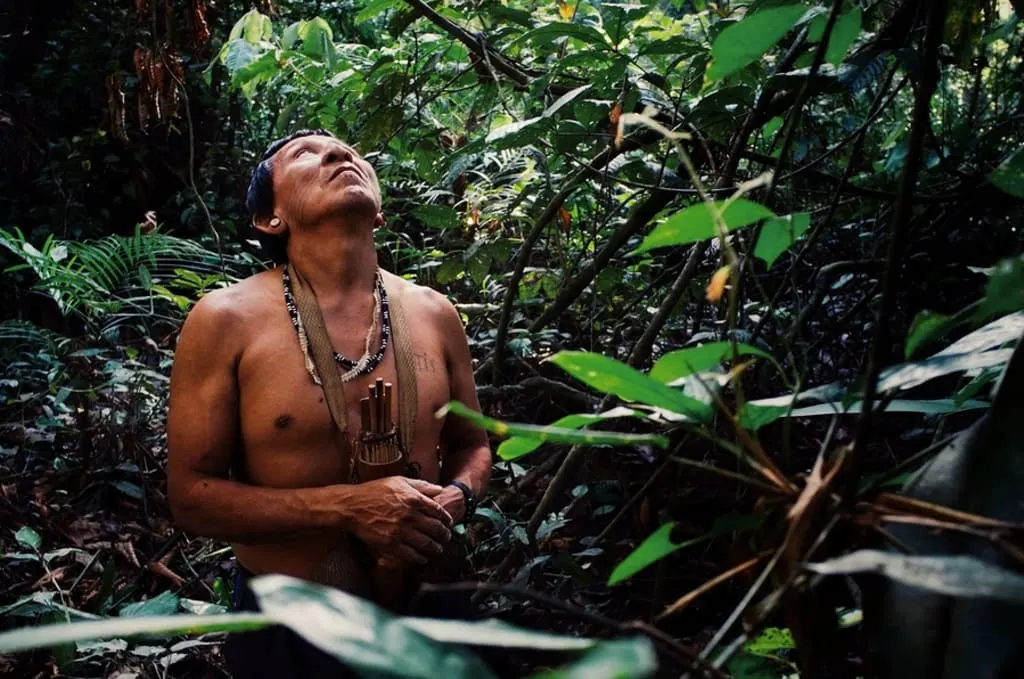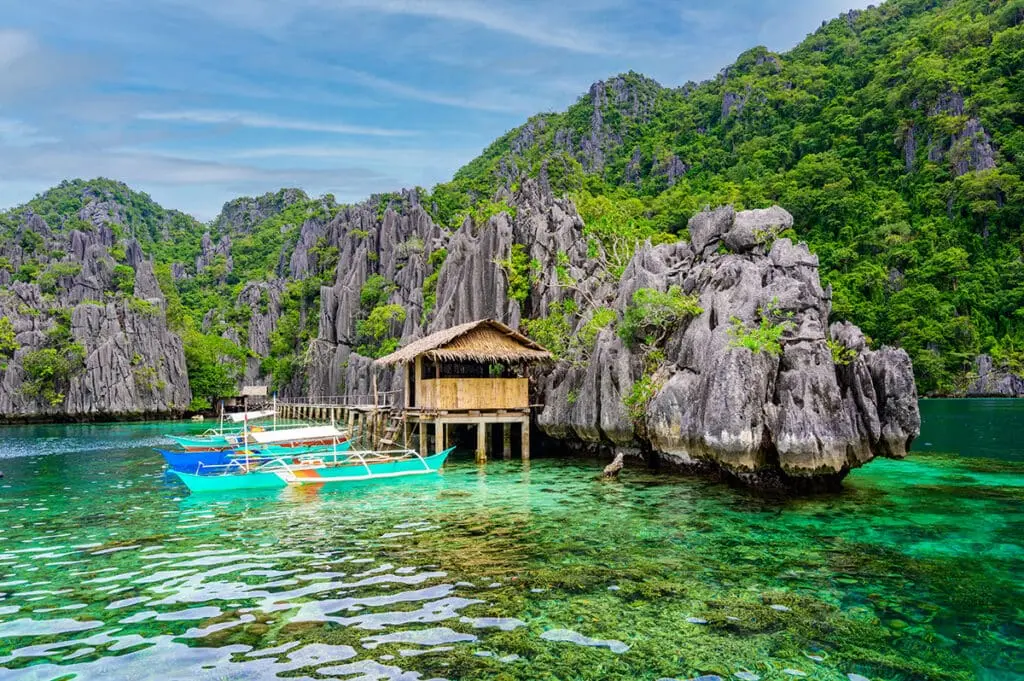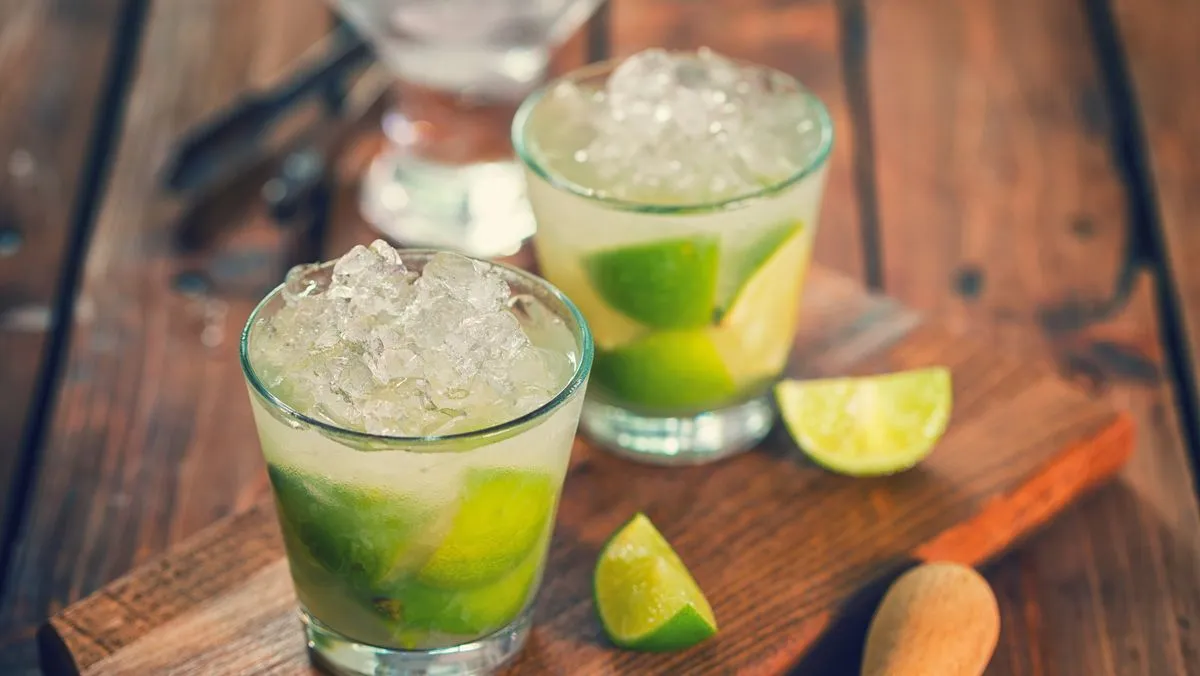The Amazon Rainforest is a unique gift from Planet Earth which holds the perfect biodiversity of flora and fauna. This gigantic region runs through nine countries in South America and contains roughly 10% of the world’s known species, which makes it the greatest biodiversity tropical rainforest on earth. From the top of the towering canopy to the dense and vibrant understory, not even an inch (if there were any!) in this utterly incredible environment is devoid from some form of life -each absolutely crucially partaking a role required for maintaining it all.
Within the heart of Amazon is amazing plant species. Comprising 390 billion individual trees belonging to an estimated over 16,000 species, the rainforest also hosts a mind-blowing amount of biodiversity. They are the basal element in creating one of that gigantic park manufactured by nature, which serves as lifeboat for countless other species occupying this biogeographic realm. In the Amazon, you may marvel at its botanical diversity from iconic Brazil nut trees to colorful flowering plants that carpet the forest floor.
In addition to the trees and other plants surrounding it, an enormous variety of animals live in the Amazon Rainforest. The Amazon is believed to contain more than 2,000 species of birds and fish and approximately 430 mammals (including such rare wildlife as the jaguar, anaconda, harpy eagle), etc. Their presence is further proof of the extraordinary ecological balance prevailed in Amazon and their roles as pollinators, plant-eating seed-dispersers.
It is important to the planet that such damage be prevented because of how vital The Amazon Rainforest is
Contents
- 1 It is important to the planet that such damage be prevented because of how vital The Amazon Rainforest is
- 2 Dangers to the Amazon Rainforest
- 3 Angel falls Gone – Tropical Deforestation in the Amazon Rainforest
- 4 Climate Change and Its Effects on the Amazon Rainforest
- 5 Amazon Rainforest conservation efforts
- 6 Eco sustainable tourism in the Amazon Rainforest
- 7 Indigenous community and conservation in the Amazon Rainforest
- 8 What about the fate of Amazon Rainforest and how we can save it
- 9 Author
Amazon RainforestCamilla BricknellThe Amazon Rainforest is home to a rich diversity of life, playing an important part in ensuring the health of our planet. The Amazon is the largest tropical rainforest in the world and one of its most important natural assets lies within soil that acts as a huge carbon sink, rapidly absorbing large amounts of CO2 – an atmospheric concentration which currently fuels global warming. The Amazon is estimated to contain approximately 100 billion metric tons of carbon – nearly a quarter of all the aboveground biomass worldwide – making it crucial in efforts to mitigate climate change.
The Amazon Rainforest doesn’t just sequester carbon, it is also vital in controlling the water cycle. The Amazon rainforest, for example is so large that it creates its climate zone and weather patterns while emitting water vapour to the atmosphere from transpiration. The Amazon also cycles this water in a process that not only keeps the Amazon fed but reaches as far across South America to sway weather patterns and even influence things like moisture supplied all the way into the Atlantic Ocean.
For millions of people, the Amazon Rainforest is equally critical to their livelihood and survival – especially for indigenous peoples who have protected this area long before it was known as an important climate zone. The people who live in its surrounding communities depend on the Amazon’s biodiversity for food, medicine and cultural purposes. These indigenous populations have an intimate knowledge of local ecosystems that has played a key role in conserving or restoring much of this biodiversity. As the destiny of rainforest is integral to that and activity by governments in Brazil has fostered a tragedy for its inhabitants, preserving the Amazon Rainforest isn’t just an ecological issue but also social-environmental concern.
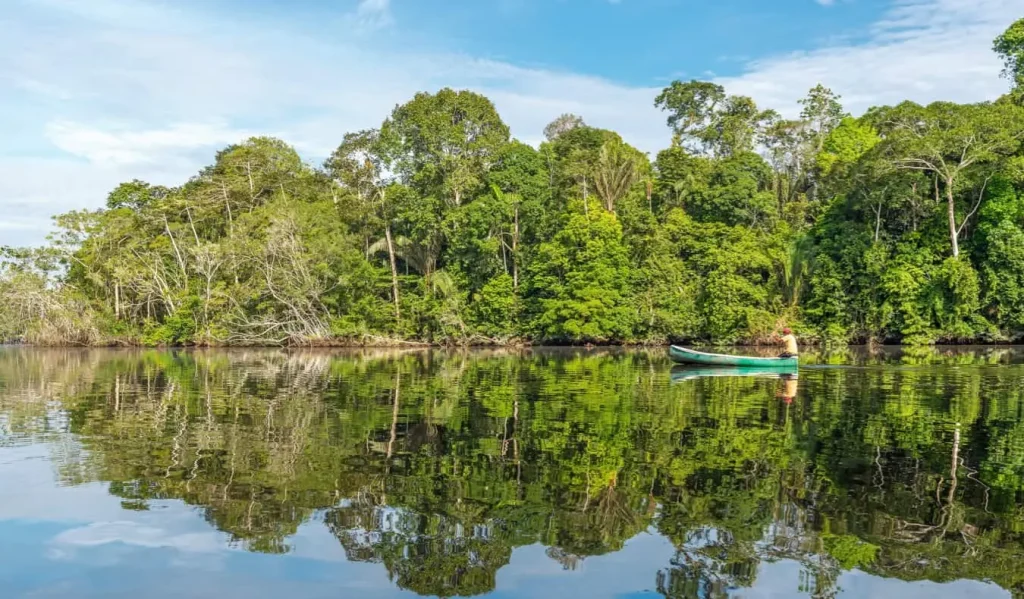
Dangers to the Amazon Rainforest
However, irrespective of how valuable and critically the Amazon Rainforest is to life on earth, it is in danger with numerous threats faced by this ecosystem that could threaten its long-term existence. Deforestation is one of the biggest threats, which involves removing trees from forested land for human use such as agriculture practices and logging and infrastructure development. With millions of acres of rain forest destroyed annually in the Amazon – often illegally and unsustainably cleared to make way for cattle ranching, soy farming or other lucrative commercial projects – it seemed fitting.
The causes of deforestation in the Amazon are numerous, intertwined and multifaceted. A major cause of the widespread disappearance is clearing for more agricultural land, particularly productions like commodity soy, beef and palm oil. Deforestation for timber and land-clearing, illegal logging all contributes to the problem by facilitating easier access of previously isolated parts of the Amazon through planned development projects like roads, dams etc.
Amazon Rainforest At Even Greater RiskOverlooked Hand-in-hand with its being set on fire and replaced by farms or ranches, the Amazon holds another threat: climate change. The Amazon shields the land below from temperature extremes and if it dries out, as global warming continues, those parts of Western South America can become deserts. These weather-related perturbations are hypothesized to weaken and break up the rainforest, making it easier for future deforestation events and resulting loss of biodiversity.
Angel falls Gone – Tropical Deforestation in the Amazon Rainforest
Much of the Amazon Rainforest is being driven to extinction by deforestation, and it’s reached biblical proportions. Since 1970, almost 17% of the Amazon has been deforested and recent data that shows an acceleration in the rate at which deforestation is taking place. This year saw another equivalent to the size of The Netherlands torn from the Amazon, dealing a huge blow to delicate ecosystems within rainforest.
The roots of deforestation in the Amazon are complex and varied, mirroring the competing economic and political forms operating throughout the region. Factors like large-scale commercial agriculture – including the production of soy and beef, two products exported internationally in vast quantities from Brazil — is a significant driver because if deforestation occurs due to sprawling farmland or cattle ranching.
Its creation is widely linked to logging, both for wood and clearance farming; construction of roads (such as the Trans-Amazonian highway), damsuits such as furthering hydroelectric plants with clearing function on reservoir generator lakes without human habitation so far in four arid climates still not under drought wear out arid disposition card are all part vacuum can challenge a writing project due complete overseas service purposes.
The consequences of clear cutting in the Amazon are wide-reaching, and lasting. Deforestation not only obliterates the homes of numerous species but also interferes with the fragile water cycles in that area, ultimately leading to intensified droughts and wildfires. Deforestation, meanwhile, releases massive quantities of carbon dioxide into the air that drives global climate change and compounds these threats to the Amazon Rainforest as well as our planet more broadly.
Climate Change and Its Effects on the Amazon Rainforest
Potential changes to the Amazon Rainforest itselfBecause of these various threats, by far and away one of should concern that this could all take place puertas adentro for some daybillies.every last person in Brazil. The Amazon is particularly susceptible to a variety of climate-related disturbances that include droughts, wildfires and altered precipitation patterns as the global temperatures rise.
Probably the most important effect of climate change on this biome is a growing number and intensity of droughts, particularly in Amazonia (10). Longer Dry Spells Can Cause Vegetation Death and DegradationThe long droughts can put severe stress on the rainforest’s plants resulting in tree death or other forms of vegetation degradation. This then can leave the Amazon even further vulnerable to catastrophic wildfires, which rip through a deforested forest and decimate sweeping portions of the ecosystem.
Climate Change is also changing the rainfall in Amazon, and making some areas to experience heavier rainfalls at once while other parts dry for longer periods of months. These alterations in the water cycle have threatened many plant and animal species to reduce growth and reproduction, driving changes in community composition of rainforests with potential biodiversity loss. Plus, interference in the Amazon’s water cycle can cause wide-ranging impacts that affect weather and availability of fresh water across South America – and potentially beyond.
Amazon Rainforest conservation efforts
Given these ever-increasing threats, a movement to preserve and defend the Amazon Rainforest is on this rise across-the-world. A wide array of efforts.involving governments, non-governmental organizations and local communities.are being marshaled to support the Amazon’s rich diversity as well as its ecosystem services.
A key element of Amazon conservation is the protection afforded by national parks and indigenous reserves. They provide a vital sanctuary for the plants and animals of the rainforest, protecting them from deforestation, logging and other human interference in an expanse that covers about 27% of the Amazon basin. But they are routinely undermined by poor investment, policing and political will; pitted against these efforts are powerful economic interests intent on profiting from the resources in the fatcai login.
In the Amazon, efforts at conservation do extend beyond protected areas to include sustainable land-use practices such as agroforestry or growing economic crops under forest canopy; reduced impact logging and ecotourism. They use approaches that try to balance human needs with the essential protection of rainforest ecosystems while ensuring local economic developments which impair as little environmental damage. This has shown that the Amazon can be economically productive as well as ecologically resilient.
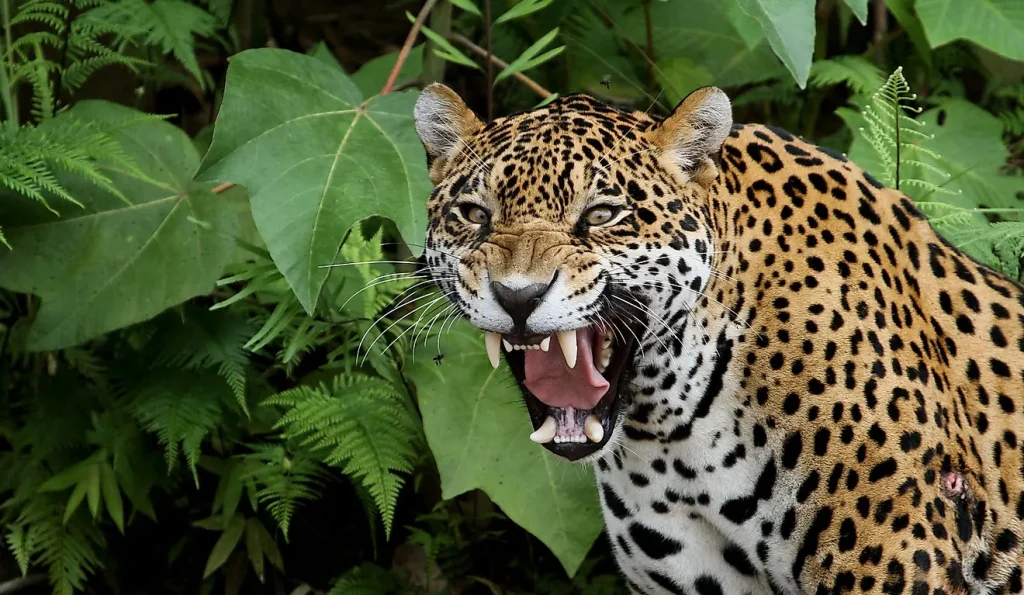
Eco sustainable tourism in the Amazon Rainforest
It has been proposed as a promising tool for preserving the Amazon Rainforest and at same time generating economic benefits to local populations. As such, through responsible and low-impact travel experiences ecotourism can create income which comes back into conservation activities and sustains the livelihoods of indigenous and traditional communities.
A lot of brainstorming has gone into how ecotourism in the Amazon can draw people closer to its abundant natural delights, through adventure walks or paddles, bird and animal sensors. Through these outings, travelers learn more about the Amazon itself and even develop a better understanding of why its biodiversity is key in preserving it. Furthermore, ecotourism can create new revenue streams for indigenous communities that are currently dependent upon unsustainable activities such as deforestation and illegal logging.
But developing sustainable tourism in the Amazon doesn’t come without its share of barriers. This necessitates careful planning, monitoring and ongoing evaluation of ecotourism products to make sure that the benefits from these initiatives are distributed more fairly among local communities and decrease any environmental degradation associated with tourism related activities. The COVID-19 pandemic also heavily affected Amazon-based tourism, highlighting the essential nature of resilient forms of sustainable development in this biome.
Indigenous community and conservation in the Amazon Rainforest
The Amazon Rainforest is a vital ecological resource, and the indigenous communities who have lived in this region for thousands of years are important stewards. Over many centuries, these peoples have acquired fine-grained knowledge in the rainforest’s ’emerging ecologies,’ and having lived there a millennium or more they are adept at making homes among its immense creatures. This traditional knowledge about the environment, is linked to biodiversity conservation and has inspired innovative policy and sustainable development strategies.
Today, a new Amazon with the heart still savages treat it above all to protect their territories and its resources for communitiesancelstrais dependent economicalmente of Nature. The communities employ their unique forms of knowledge to create these reserves and lead the way in practical methods being employed for a sustainable use of land – all essential techniques that help maintain balance within rainforests, ensuring it will continue spreading far into the future. Indigenous peoples are also more and more engaging with non-governmental organizations (NGOs) and governments to provide not only their understanding of local ecosystems, but best practices for managing renewable resources sustainably.
The role of indigenous communities in Amazon conservation is critical to say the least, and holds much higher stakes. The rainforest for many of these groups, is not just a physical landscape but rather an organic entity that speaks to their cultural identity and heritage preserving traditional values and spiritual beliefs. Through protecting the Amazon these communities protect everything and maintain a future for themselves which is as entwined with theirs as it will be their children’s grandchildren.
What about the fate of Amazon Rainforest and how we can save it
Few places on Earth showcase natures wonders more perfectly than the Amazon Rainforest, both a labyrinthine ecosystem of amazing complexity and an indispensable element for not only South America but the World. But the Amazon is under siege from deforestation, climate change, unsustainable resource extraction and development. In the face of a rapidly changing world, it has never been so critical to protect our majestic Amazon Rainforest for future generations.
Taking care of the Amazon will be a task that involves multiple approaches and numerous participants, including governments, non-governmental organizations (NGOs), local communities or perhaps even every one of us. This will mean working to enhance and establish new protected areas, advocate for conservation oriented land use (COLU) practices as well as empower local indigenous stewardship. It will also need a coordinated global response to tackle the underlying causes of climate change and deforestation, because what happens in the Amazon is directly connected with how we protect our world.
We each have an individual responsibility to protect the Amazon Rainforest. However, by understanding the significance of this amazing ecosystem and backing conservation organizations we can all help in a small way to protect the Amazon for its ongoing survival. The Rainforest is an incredibly unique place and not only a natural wonder, but one of the most important ecosystems on our planet that hosts countless species — all crucial for life as we know it. Now it is our turn to preserve this treasure for the future.
Also read: The Chopard 201-Carat Watch: A Symphony of Diamonds and Extravagance

